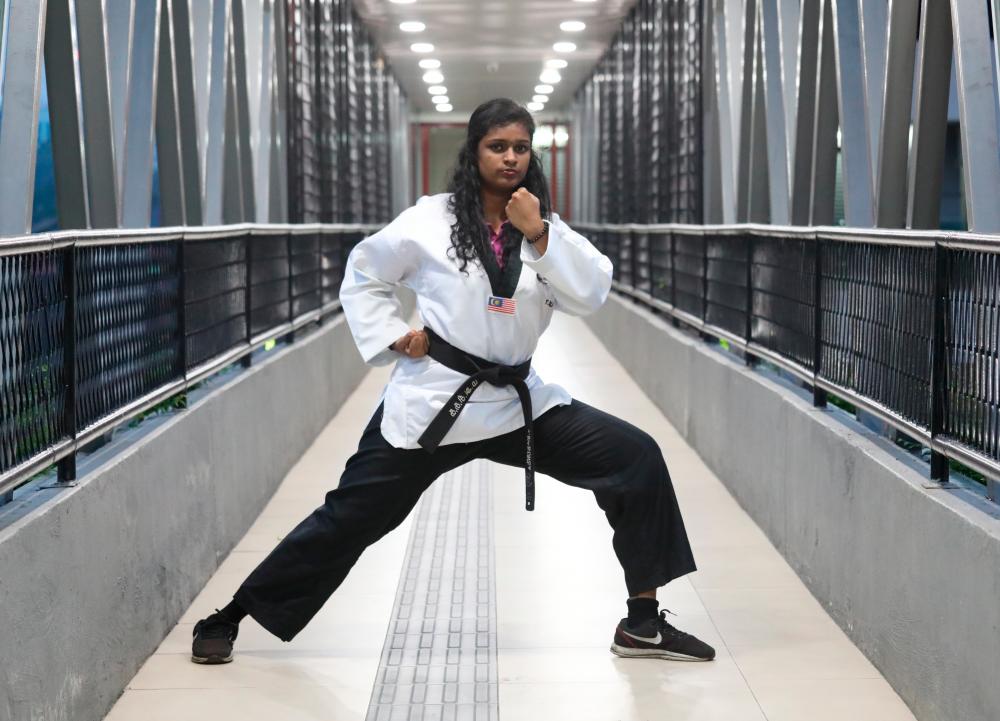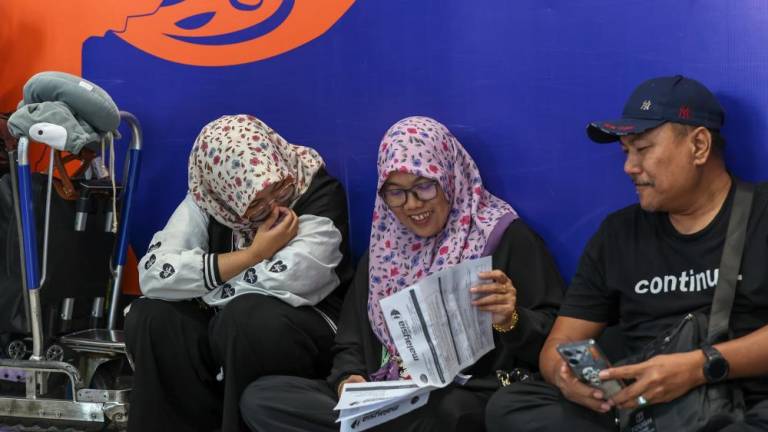WHEN we first met Durga Devi Thamoodran, she looked like the typical girl next door.
However, there’s steel behind that sweet smile of hers, as this gutsy 21-year-old is an adept silambam exponent, and she can take you down using practically anything she can get her hands on.
Silambam is a weapons-based martial art which originated from India’s Tamil Nadu state.
It was first established around the 10th century BC.
This form of traditional martial arts is so popular in southern India that it has been featured in many Kollywood movies, where the hero bravely takes on several baddies at once using nothing more than a bamboo staff.
We came to know of Durga Devi when she was announced as one of the winners of the Kotex#SHECAN fund, which was set up last October to inspire more young women to make strides in areas where women are currently under-represented, from the arts to education, to entrepreneurship and beyond.
Durga Devi’s father is a silambam grand master, and she has a younger brother who is also into silambam.
However, she said the person who pushed her to take it up as a sport was her mother, a non-exponent of the art.
Durga Devi has gone on to win two gold medals at the 2013 Second International Asian Silambam Championship but she said she has not taken part in any competitions since Form Six though she assists her father who gives silambam lessons in schools.
Currently pursuing a degree in political science from University Malaysia Sarawak (Unimas), we met up with Durga near her home in Petaling Jaya on her varsity break recently.
When did you start learning silamban?
“I was around five years old. I learned it from my father, who is also my grand master.
“My brother and I used to follow my father when he travelled around to give silambam demonstrations. I thought it looked easy. I got interested and wanted to learn it.”
What attracted you to silambam?
“It is about an Indian tradition. When I started learning it, it was more than just martial arts. Although it was something [for self-defence], it also teaches you how to use anything as a weapon.
“I initially thought it was all about punching and kicking. It is not easy to learn.”
Do you practise at Unimas?
“There are silambam groups in Sarawak. They will do their own thing while I do my own training.”
What is the common perception people have when you tell them you are a silambam exponent?
“[They say:] ‘You only use a stick, right? Hanya guna kayu aje, kan?’ I have to explain that there is more to it than that.”
What other weapons are there?
“We use other weapons such as the maru (deer horns), or the surul khathi (a flexible sword).”
Can one take on 20 people at the same time, like in movies?
“It all depends on a person’s strength. It is not as though once you learn silambam, you can do this.”
How old are your students?
“My students are mostly in primary school (the youngest is seven), but I also have a few who are in secondary school.”
What is the most important thing you’ve learnt from silambam?
“How to discipline myself – that is the first thing I learnt.”
Do you apply lessons from silambam to your life?
“I learnt how to be punctual, it is something I applied in my university life. I also gained more confidence, and that helped me make more new friends.”













